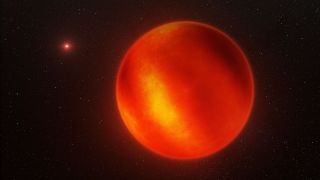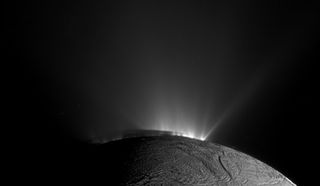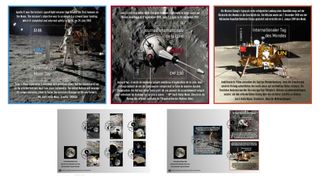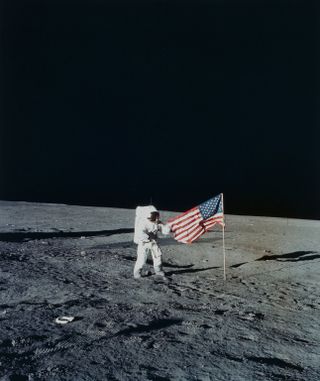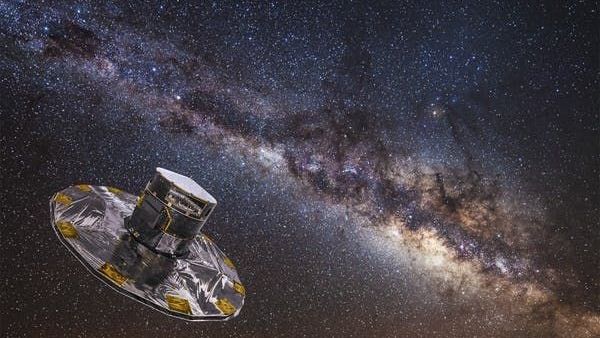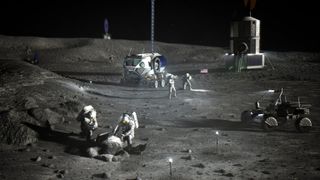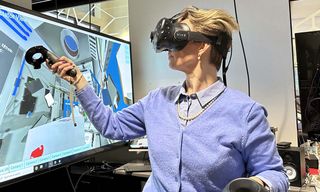SpaceX just added another mission to its already crowded launch manifest. Elon Musk‘s company won the launch contract for the U.S. National Oceanic and Atmospheric Administration’s (NOAA) JPSS-4 satellite. If all goes according to plan, JPSS-4 will lift off atop a Falcon 9 rocket from California’s Vandenberg Space Force Base in 2027. The firm, fixed-price contract is worth $112.7 million, “which includes launch services and other mission-related costs,” NASA officials wrote in an update on Monday (July 22). The JPSS (“Joint Polar Satellite System”) program is a cooperative effort of…
Read MoreTag: Space Exploration
Alien weather report: James Webb Space Telescope detects hot, sandy wind on 2 brown dwarfs
The James Webb Space Telescope (JWST) has discovered stormy weather in the sky of two brown dwarfs in the most detailed weather report yet from such “failed stars.” The two brown dwarfs form a binary pair called WISE 1049AB that was discovered by NASA‘s Wide-field Infrared Survey Explorer (WISE) in 2013; the duo sits just 6.5 light-years away from us. They are the closest brown dwarfs to our sun, and thus make an excellent target for the James Webb Space Telescope‘s powerful infrared instruments. A brown dwarf is an object…
Read MoreSigns of life could survive on solar system moons Enceladus and Europa
If life exists on the icy ocean moons of Enceladus and Europa, detectable trace molecules could survive just below their frozen surfaces. Scientists have long theorized that both Enceladus, one of Saturn’s 146 known moons, and Europa, one of Jupiter‘s four large Galilean moons among its total 95 moons, could host vast liquid water oceans that harbor life. If this is the case, then complex organic molecules like amino acids and nucleic acids, the building blocks of life as we know it, could serve as “biosignatures” of life on the…
Read MoreUnited Nations marks Apollo 11 55th with international moon missions stamps
Photos of the moon captured by American, Russian, European, Japanese, Indian, Korean and Chinese spacecraft are the subject of new United Nations (UN) postage stamps commemorating the 55th anniversary of the NASA‘s Apollo 11 lunar landing mission. The UN Postal Administration (UNPA) will release six se-tenant postage stamps and three souvenir sheets on Saturday (July 20) to celebrate International Moon Day. Since 2021, the UN has recognized the day that astronauts Neil Armstrong and Buzz Aldrin walked on the moon “to raise awareness about the commitment to sustainable lunar exploration…
Read MoreWhat became of the flags Apollo astronauts left on the moon?
55 years ago today, Apollo 11’s flag raising on the ancient lunar surface took all of 10 minutes during Neil Armstrong’s and Buzz Aldrin’s two-and-a-half hour moonwalking adventure in July 1969. But that seminal event in vexillological history was not without a lot of debate, discussion and early worries that were run up the policy flagpole about “who owns the moon?” (Vexillology is the study of the history, symbolism and usage of flags.) Matthew Ward is a senior lecturer in history at the University of Dundee in Scotland. He notes…
Read MorePolaris Dawn crew shows off new SpaceX spacesuits for 1st private spacewalk (photos)
This first ever private spacewalk will be bringing some serious style to outer space. SpaceX‘s privately-funded crewed mission, Polaris Dawn, is moving toward a launch sometime this summer. The four-person crew, which includes the mission’s funder, billionaire philanthropist Jared Isaacman, recently completed acceptance testing for SpaceX’s new extravehicular activity (EVA) spacesuits, which they will wear as they become the first private citizens to perform a spacewalk on orbit. In addition to Isaacman, the crew includes two lead operations engineers at SpaceX, Sarah Gillis and Anna Menon, serving as mission specialists,…
Read MoreNASA delays ISS spacewalks indefinitely to investigate spacesuit coolant leak
NASA says its next spacewalk will be delayed indefinitely until engineers understand more about what caused a coolant leak on June 24. Tracy Dyson, a NASA astronaut, had a brief spacesuit leak a month ago while still in the hatch of the International Space Station (ISS). She and Mike Barrett had just opened the door for a 6.5-hour spacewalk for maintenance activities, when showers of ice particles erupted from a spacesuit connection to the ISS. The spacewalk was suspended, but the astronauts were never in any danger, NASA has emphasized.…
Read MoreA high-speed particle struck the Gaia space telescope — but Gaia came back stronger than ever
In the eleventh year of its mission, the European Space Agency (ESA)’s Gaia space telescope has suffered a pair of technical snags. The telescope has spent its time in space precisely measuring the positions and motions of distant stars, offering an immense boon to astronomers. ESA said that Gaia suffered first a puncture from a fast-moving micrometeoroid, then an electronics malfunction. Due to these issues, the telescope began sending its Earthbound operators gigabytes of junk data. “Gaia typically sends over 25 gigabytes of data to Earth every day, but this…
Read MoreNASA wants fresh ideas for recycling garbage on the moon
With crewed Artemis launches on the horizon, NASA is searching for sustainable solutions for waste management during long-term missions on the moon. An initiative called LunaRecycle, under the space agency’s Centennial Challenges Program, aims to incentivize the design and development of recycling solutions for use on the surface of the moon and/or inside pressurized lunar habitats. The program aims to reduce solid waste streams during long duration lunar missions under the Artemis Program, as well as to improve the sustainability of future space exploration. “As NASA prepares for future human…
Read MoreLoneliness is a dish best served in space: Why food may taste weird to astronauts
Studying common food aromas may help scientists better understand why meals reportedly taste bland in space, leading to astronauts’ decreased nutritional intake. Researchers from the Royal Melbourne Institute of Technology (RMIT) in Australia have found that spatial perception can play a significant role in how people smell various aromas, which, in turn, impacts their flavor. As it turns out, a greater sense of loneliness and isolation — which astronauts may experience while on the International Space Station (ISS) — can influence how people smell and taste their food, according to…
Read More
